Hard Work, but Worth the Effort — Periwinkles
When you get adventurous with food, sometimes you just want to drag your friends along, whether or not they know what they’re getting into. Lately I’ve been having this craving for something from my childhood in Thailand—Periwinkle snails—and I was thrilled to finally find that I could get some at Om Seafood in Portland and eager to expose my partner, Charles, and our good friends Tina and Steve to the allure of the sea snails.

Live Periwinkles
In Thailand, I remember them being called “Hoy Juk.” In Thai, the word “Hoy” can be applied to clams, oysters, mussels, or in this case, sea snails. Thais just don’t have a different word to describe each of those critters like we do in English. The name “Juk” comes from the sound that you make trying to suck the critters out of their spiral shells.
Nowadays you don’t have to suck the critters out; you can use a toothpick. But I like the idea nonetheless. Periwinkles are found in tidal zones in many parts of the world and are less famous and smaller than their more renowned escargot cousins. But their flavor reminds me of clams, briny like the ocean, but sweeter and with more texture.
We started off dinner by serving our dinner guests some Green Lights to lower their inhibitions. When I called them earlier in the day to ask them to dinner, I told them I was making Dungeness crab. And technically I wasn’t lying—I was serving crab, but I was also going to be serving Periwinkles in two different versions with two different dipping sauces. By the time the first round of drinks was consumed, I fessed up to the second dish. There were no objections.
As a matter of fact, we all enjoyed the Periwinkles as much as the crab. There were extra napkins on the table that night because it was definitely a meal you had to work at with your fingers.
One of the dishes is a more Western treatment, the other more Eastern. You decide which you like best and let us know.

Periwinkles with Vermouth and Shallots
Periwinkles with Vermouth and Shallots and Herbed Butter Dipping Sauce
- 1 pound (455 gr.) live Periwinkle snails rinsed in cold water and drained. (If they’re dead, they’ll slide out of their shells. Discard dead ones. The live ones will cling tightly to their shells)
- 2 shallots thinly sliced
- 2 tablespoons (30 ml.) of butter for the Periwinkles, and a stick of butter for the dipping sauce
- 2 teaspoons (10 ml.) Spice Island Italian Seasoning
- 1 teaspoon (5 ml.) garlic seasoning
- 1 cup (240 ml.) dry Vermouth
- In the microwave or small saucepan, melt the stick of butter, add the Italian seasoning and garlic seasoning and keep warm until ready to serve.
- In a medium saucepan, melt the 2 tablespoons of butter.
- Over medium heat, add the shallots and cook until they turn translucent.
- Add the vermouth and bring to a boil.
- Add the Periwinkles, stir a few times, cover with lid and cook 3 minutes.
- Serve immediately with the herbed butter dipping sauce.

Periwinkles with Lemongrass and Kaffir Lime Leaves
Periwinkles with Lemongrass and Kaffir Lime Leaves and Garlic Dipping Sauce
For Periwinkles
- 1 pound (455 gr.) live Periwinkle snails rinsed in cold water and drained
- 1 cup (240 ml.) chicken stock
- 2 stalks of lemongrass, cut into thin diagonal pieces
- 4 Kaffir lime leaves
For dipping sauce
- 4 cloves garlic
- 1 red cayenne pepper
- 1 lime
- 1 tablespoon (15 ml.) fish sauce
- Prepare the dipping sauce by peeling and cutting the garlic into small pieces. Cut cayenne pepper into small pieces. Pound the garlic and cayenne together in a mortar and pestle until the garlic turns into a pulpy paste.
- In a small bowl, combine the juice from 1 lime and the fish sauce. Add the garlic and cayenne paste from the mortar and pestle. Mix well and set aside until you’re ready to serve the Periwinkles.
- In a saucepan over medium-high heat, bring the chicken stock to a boil. Add the lemongrass and Kaffir lime leaves. Stir briefly, then add the Periwinkles and stir for a minute, then cover with lid and cook another 2 minutes.
- Serve immediately with the dipping sauce.
The garlic dipping sauce reminds me a lot of wasabi. It is definitely aromatic and an intense (in a good way) experience.
Our dinner guests brought a bottle of Left Coast Cellar’s Pinot Gris, which went perfectly with the meal.
— Vic
Category: Seafood
About the Author (Author Profile)
Victor Panichkul is a journalist and writer by training; a cook, wine lover and photographer by passion; and a lover of the outdoors since moving to Oregon more than 10 years ago. He is a native of Bangkok, Thailand.


















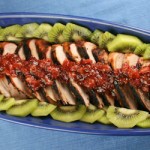
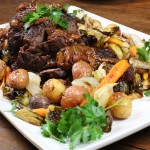
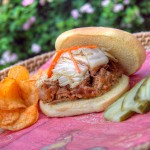
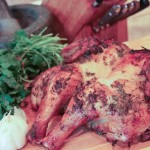
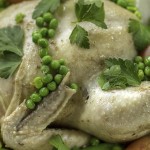

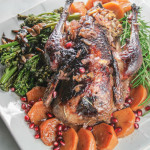

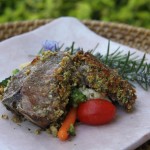
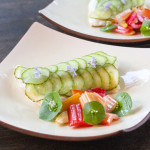
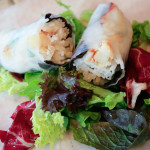
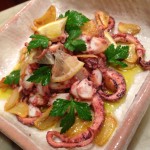

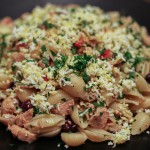

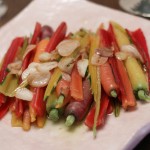
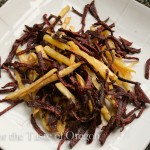


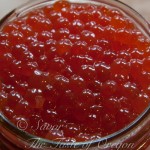

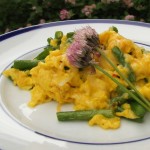
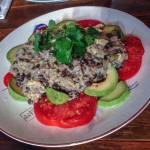

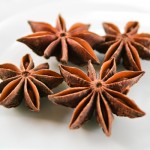
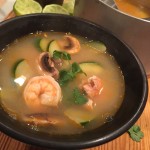
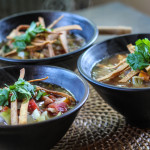
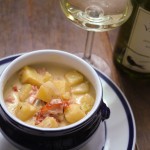
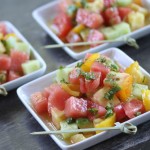


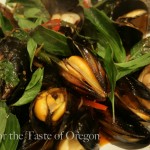





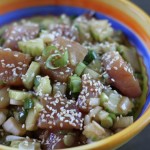
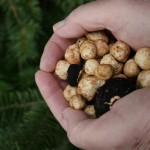
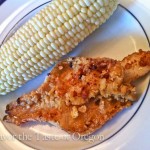



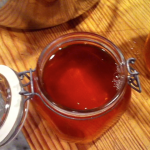











It’s all about the texture and the dipping sauce
Sounds interesting and tasty.
I love periwinkles. I grew up eating them in Belgium. I know this is an old article, but if anyone knows a source in the PDX area for these little buggers, let me know. Ping me on my blog.
Try ohm seafood in Portland.
Finally got around to picking these little gems. They are growing here in Nova Scotia in great abundance. Loved your lemon grass and kaffir lime leaves recipe - a true delicacy!! Thanks for the recipe.
I’m from Hartlepool North East of England, I have been cooking live winkles for years,our beaches are covered in them.
First of all you must make sure your winkles are spotless clean & grit free,to do this when you get your winkles home give them a good rinse in clean water,then cover them literally in a bucket with cooking salt & fill your bucket up with fresh water,every hour give them a good churn with your hand,change water every 4 hours,leave overnight & repeat the same process.Do this for at least 2 days or until there is no grit left in the sink when you rinse them.
To cook them,use a big pan,fill half your pan with winkles & again cover with cooking salt,this will make them even tastier,cover the winkles with cold water & bring to the boil & simmer for 3 minutes stirring every now & then this will release the winkle eye,I eat them as they are they are delicious on their own & not at all rubbery.
Hope this will help you if your not to sure.
Oh i love this. I can’t it always though since they don’t sell it in the market but it really is addicting.
What we do. We wash it a lot.
Then boil it and add some salt. So the taste will be a little bit natural.